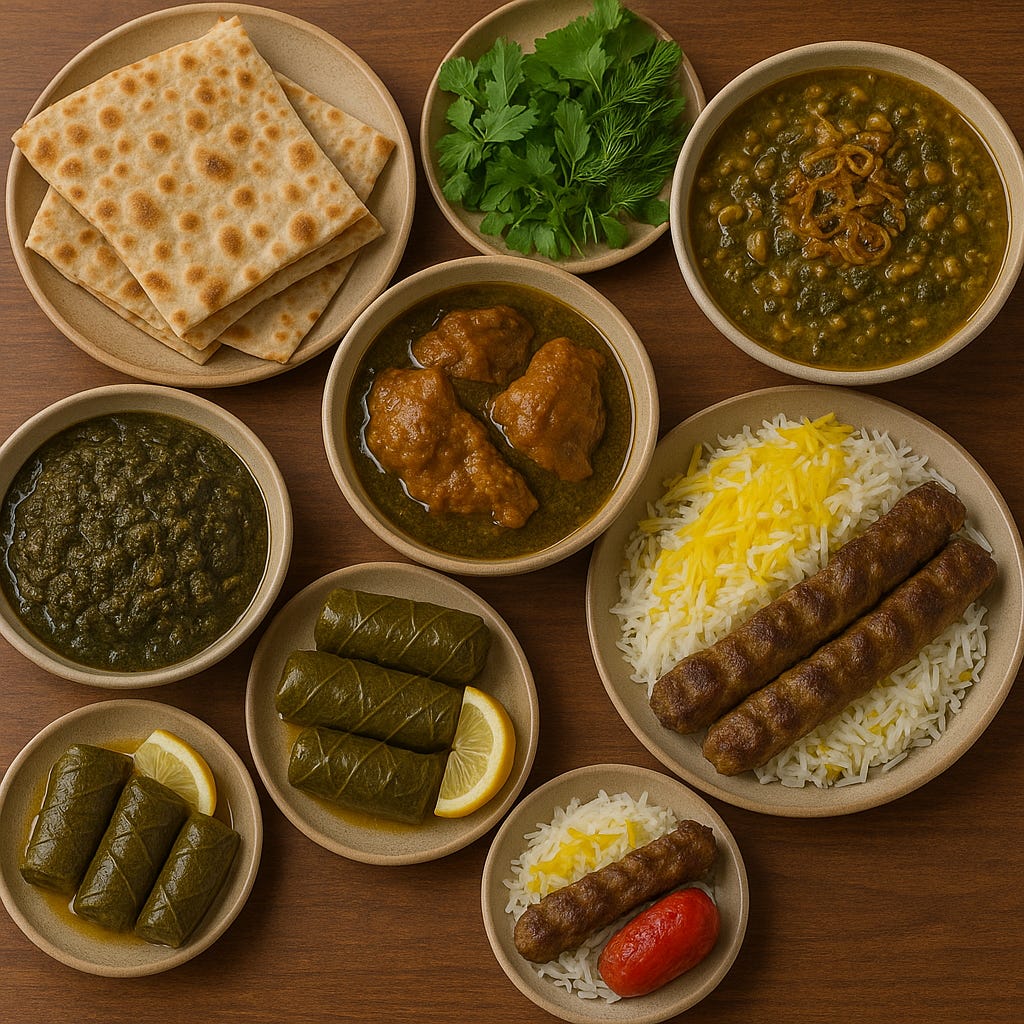🇮🇷 Iran’s Culinary Renaissance: Why Persian Cuisine Deserves the Global Spotlight
From Ancient Banquets to Modern Food Hubs, Iran’s Flavours Are Ready for the World
Persian cuisine is more than just a collection of recipes—it’s a cultural journey, a historical record, and a sensory experience wrapped into one. With bold flavours, centuries-old techniques, and an unwavering commitment to hospitality, Iran’s culinary traditions are uniquely positioned to captivate global appetites.
According to a recent report by Press TV, Iran has all the ingredients—literally and figuratively—to become a major hub for the food industry. Its vast agricultural resources, culinary diversity, and deep-rooted food culture provide fertile ground for international culinary recognition.
A Taste of History: The Roots of Persian Cooking
Iran’s culinary identity stretches back to the Achaemenid Empire (550–330 BCE), where royal banquets and sophisticated use of ingredients like saffron, cinnamon, and cardamom laid the groundwork for what would become one of the world’s most refined food traditions. Over time, influences from the Silk Road and neighbouring empires infused Persian cuisine with new techniques and ingredients, resulting in a unique blend of sweet and savory.
Food in Iran isn’t just about sustenance—it’s a symbol of unity and celebration. Persian literature, from Ferdowsi’s Shahnameh to the poetry of Rumi, is rich with references to lavish feasts and shared meals, reinforcing the idea that food is at the heart of Persian culture. As the Persian proverb says:
“A Guest is the friend of God.”
Core Ingredients of Persian Cuisine
Iran’s geographical diversity—from the lush Caspian north to the warm southern coasts—makes it an agricultural treasure trove. Staples include:
Basmati Rice (Polow and Chelow): Often served with saffron and topped with crispy tahdig, the golden crust at the bottom of the pot.
Persian Bread (Nan): Flatbreads like sangak, lavash, and barbari are commonly paired with cheese, nuts, and fresh herbs.
Fresh Herbs & Spices: Dill, parsley, mint, fenugreek, and tarragon lend depth to dishes, while pomegranate molasses adds a tangy, sweet complexity.
Proteins: Lamb, chicken, and fish are marinated in yogurt and spices, then grilled or slowly stewed.
Iconic Dishes to Know (and Crave)
Persian dishes are crafted with intention, often linked to celebrations, seasons, and family gatherings:
Ghormeh Sabzi: A beloved herb stew made with lamb, kidney beans, and dried lime. It’s a staple of Persian home cooking.
Fesenjan: A rich stew of ground walnuts and pomegranate molasses, often served with chicken or duck.
Kebabs: From Koobideh (minced lamb or beef) to Jujeh (saffron chicken), grilled meats are a signature of Iranian get-togethers.
Ash Reshteh: A thick soup of noodles, lentils, chickpeas, and herbs, traditionally served during Nowruz (Persian New Year).
Dolmeh: Stuffed vegetables or grape leaves filled with seasoned rice and sometimes meat, showcasing Iran’s agrarian heritage.
A Global Invitation
Whether you’re savouring a perfectly grilled kebab from a street stall or enjoying a lavish spread at a traditional restaurant, Persian food offers not just taste, but a story—a connection to ancient empires, poets, trade routes, and family traditions.
With Iran’s rich culinary history and the growing interest in authentic global cuisines, the country is primed to take its rightful place on the world’s food stage. From the aroma of saffron to the comfort of slow-cooked stews, Persian cuisine is an invitation to experience Iran’s soul—one delicious bite at a time.


